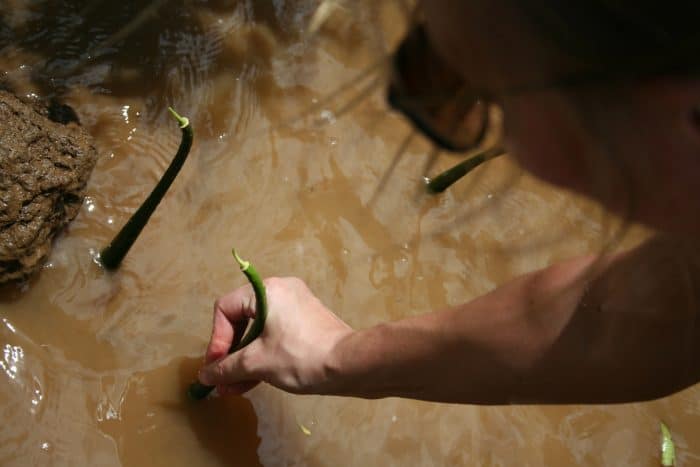In Guanacaste, a mangrove restoration project is underway, and it is positively impacting the environment and the economy of the area. Mangroves are a source of life for birds, fish, and mollusks, prevent coastal erosion, and provide a barrier to strong winds and waves. According to experts, these ecosystems capture up to five times more carbon than forests on land.
The mangrove restoration and conservation project in the Cipancí National Wildlife Refuge, located in Guanacaste, has recovered the land through the opening of canals and the demolition of walls, allowing the entry of tides and the natural growth of new mangrove seedlings.
“Since 2018, thanks to a public-private initiative in conjunction with the Cipancí National Wildlife Refuge, we have worked on the restoration and rehabilitation of 19 mangrove sites, formerly occupied by salt and shrimp extraction activities in the area of Colorado de Abangares, Guanacaste,” indicated Ewald Scheel, Country Director of Cementos Progreso Costa Rica.
This project has three important components:
- The first is technical and research work for mangrove restoration
- The second is environmental education for key audiences such as schools, community associations, and ASADAS, where the importance of these ecosystems is discussed
- The third one promotes socio-economic development in the area, generating employment for fishermen’s associations to carry out the work in the field
Artisanal fishermen’s associations strengthen their family economies by being hired to carry out restoration and rehabilitation activities, coinciding with the off season when their main source of income is suspended for approximately three months.
“This project fuses research with the recovery of the ecosystem by the community’s main actors. At Cementos Progreso, we know that by recovering our mangroves, we create a powerful source of life,” said Scheel.
Currently, the 19 sites have the equipment to measure the physical and chemical parameters necessary to monitor the health of the soil and its evolution. By 2024, work will continue on new channel openings. In approximately five years, official data on how much blue carbon these sites are capable of capturing is expected.
Under the slogan “We are the #GenerationRestoration,” this year’s campaign highlights the urgency of restoring land, stopping desertification, and improving resilience to droughts.








